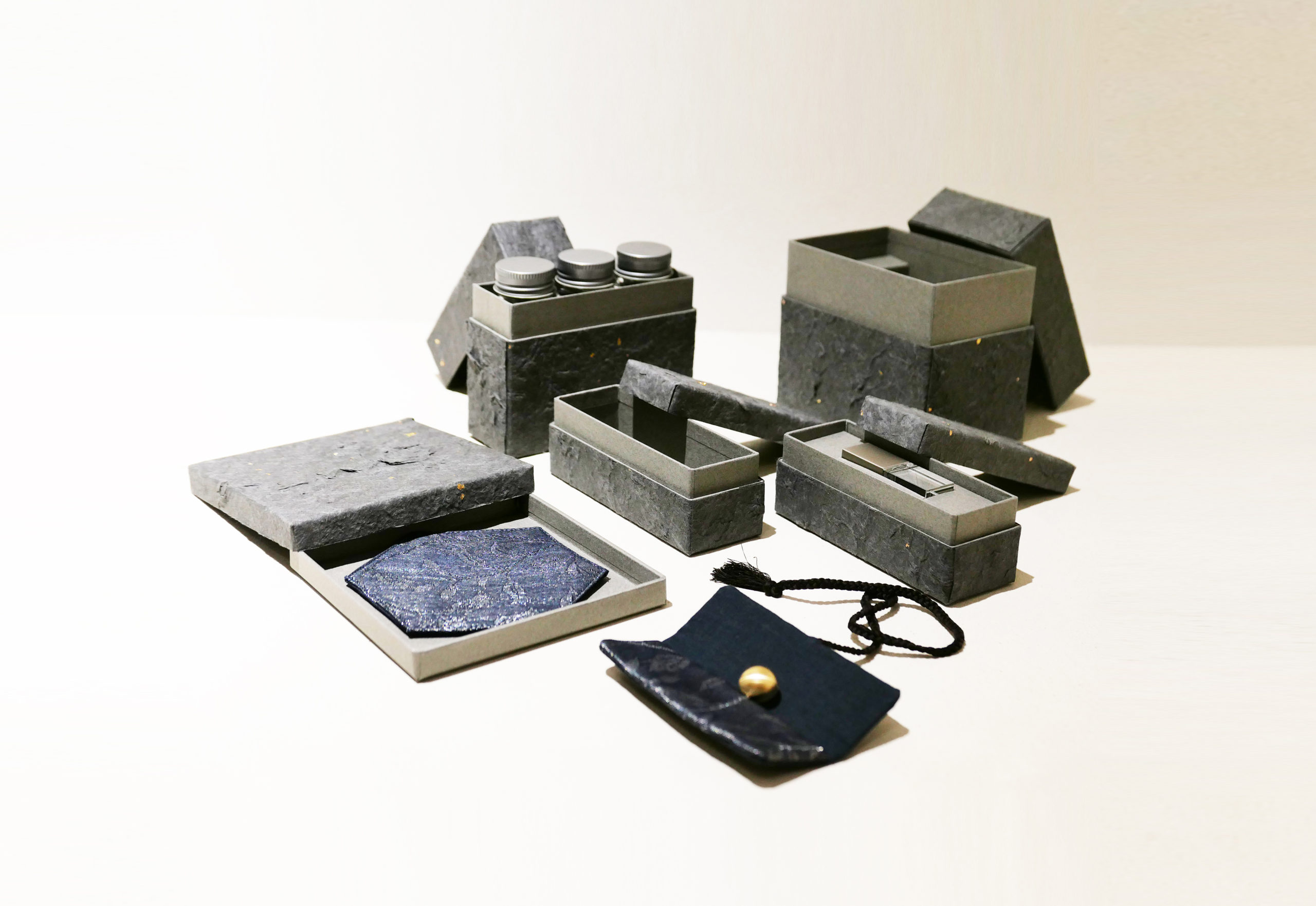ニューヨーク・マンハッタンのレストラン〝odo〟が限定提供するスペシャルなギフトボックスをデザインしました。既存の黒いオカモチボックスに納まるようにサイズを設計し、ベンガラ染の手漉き和紙を張り込みました。この特別な和紙は佐賀・唐津の紙漉思考室・前田さんにお願いしました。また、昨年からタッグを組ませて頂いている奄美大島の金井工芸・金井さんにはヴィンテージ着物の生地をオーバーダイしたものをコースターに仕上げていただき使用しています。そして中にパッケージングするアイテムがスペシャル揃いです。
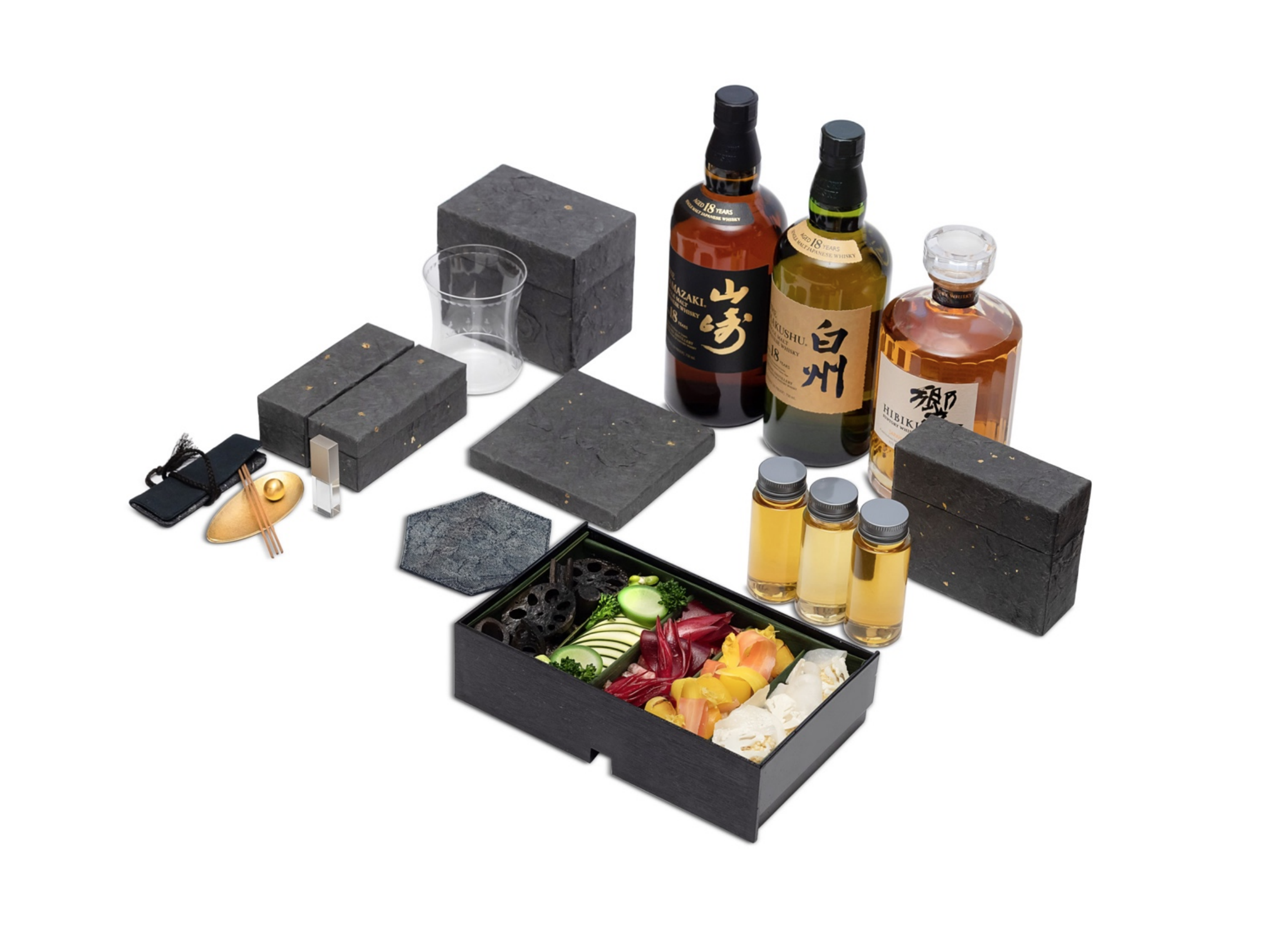
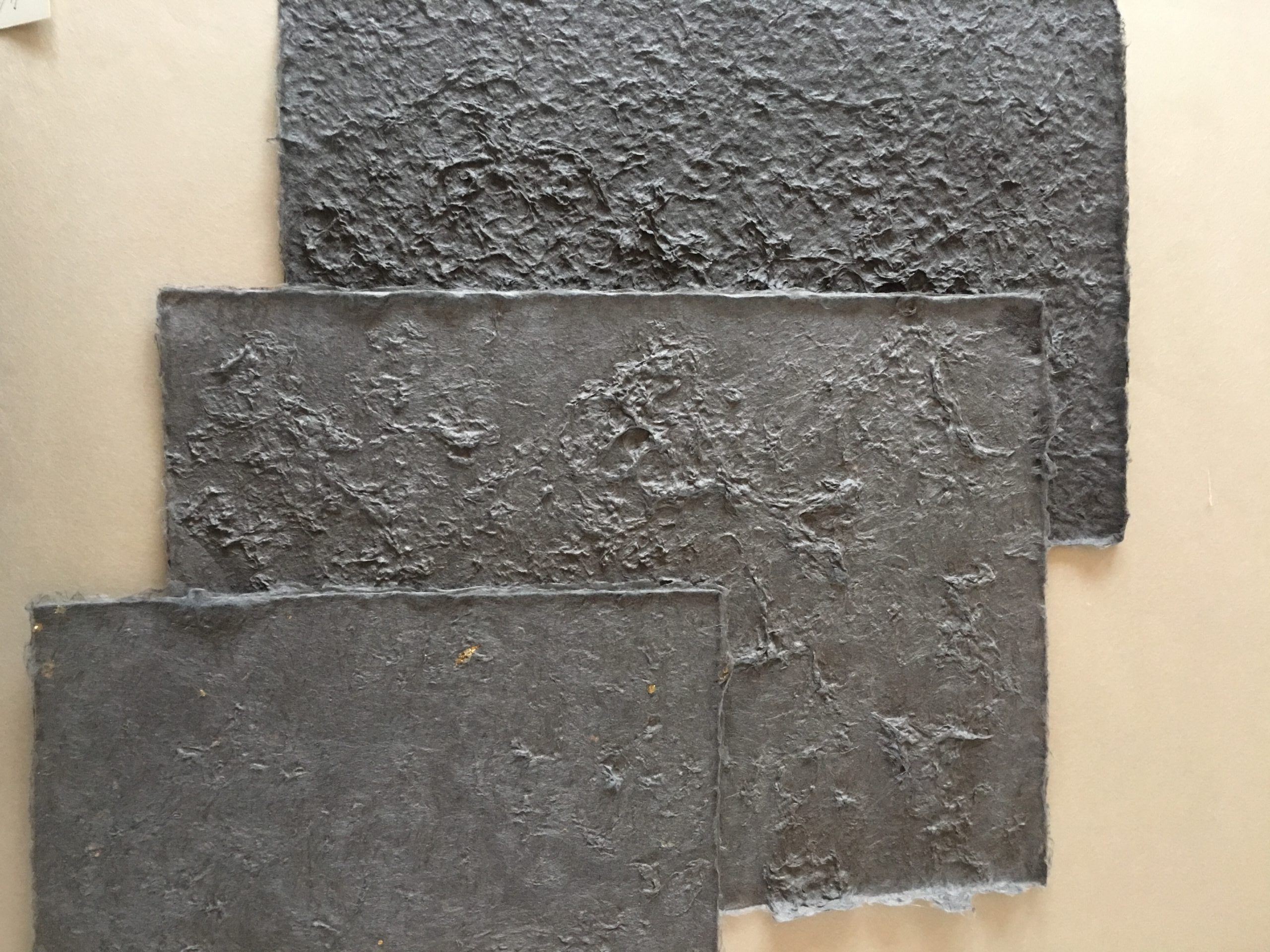



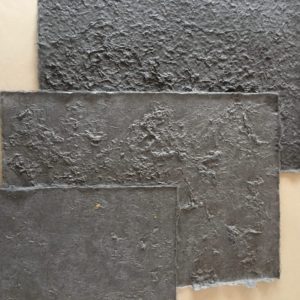
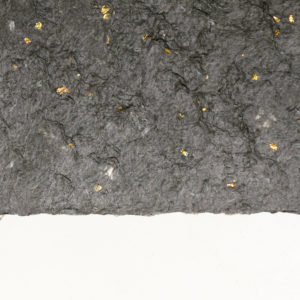
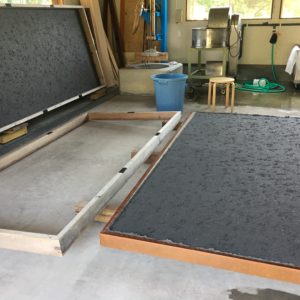
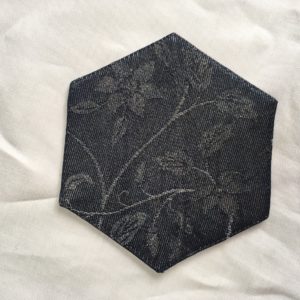
Christmas Gift $1500 (set of 6 items)
**A gift set for all five senses.
This gift box represents Chef Odo’s belief in drawing wisdom and techniques from both history and nature, and its aesthetics mirror those of the intimate space in which he works: sleekly minimal, dark grey, and subtly complex.
1, “Sakana” (ATE) : 5 Dishes
An aesthetically pleasing preparation of Japanese cuisine五味・五色・五法 (Gomi Goshoku Gohou = 5 flavors, 5 colors, 5 methods) that accompanies your SUNTORY whiskies
5 flavors=Sweet, Sour, Spicy, Bitter, Salty
5 colors=White, Yellow, Red, Green, Black
5 methods=Raw, Boiled, Grilled, Fried, Steamed
Black, Raw and Spicy= A5 Wagyu beef jerky
Green, Bitter and Steamed = Snow crab
Red, Sweet and Grilled = Roast beef marinated in sake lees
Yellow, Salty and Fried= Deep-fried blow fish
White, Sour and Boiled = Spanish mackerel in sweet and sour sauce
2, Set of SUNTORY whiskies 2oz. Prepared in a small bottle
YAMAZAKI 18 YEARS OLD
Rich, ripe fruit gives way to notes of vanilla, dark chocolate, and mizunara (Japanese oak). The lasting finish segues from spicy to smooth and back again elegantly and harmoniously.
HAKUSHU 18 YEARS OLD
A bright, verdant nose is the precursor to soft, tart orchard and citrus fruits before a mid palate of light peat and smoke. The finish is pastried but balanced by the spice of cinnamon and cardamom.
HIBIKI JAPANESE HARMONY
A beautifully subtle, floral aroma is followed by a surprisingly dry and balanced palate of Bartlett pear, white pepper, malted chocolate, and faint wisps of smoke, just before a long, nuanced finish of honey, raisin, and cassia bark.
3, Kimura glass 8oz.
Delicate, paper-thin, intricately cut glassware for the finest of occasions.
4, USB music playlist curated by The Backroom (Japanese whisky club by Chef Hiroki Odo) in Oshima tsumugi case
Famed producer and musician Ryuichi Sakamoto have created a playlist to enhance your enjoyment of the rare Japanese whisky we’ve provided.
Originally this oshima tsumugi case was a Kimono sash before being repurposed into its current form.
The pattern is known as “Karakusa” or winding plants. Vines grow in all directions, entwining often as symbols of vitality, prosperity, and longevity.
5, Oshima tsumugi coaster
This coaster was created in Amami, an archipelago between Kyushu and Okinawa. The chain of islands are in a mountainous yet subtropical zone, a perfect habitat for the mulberry trees whose leaves are used for both the dye and the material for weaving. It was produced by KANAI KOUGEI, who specializes in “dorozome,” a process of mud dying that dates back 1300 years and is reliant completely on the natural environment.
6. Shoyeido incense and incense holder
Moss Garden: An impeccable blend of sandalwood, patchouli, and benzoin constitute this enchanting fragrance, evocative of plum flowers blooming by a window.
White Cloud: A fragrance inspired by the image of white clouds against a blue sky. Crafted from a decades-old recipe, White Cloud’s earthy yet sweet scent helps bring you a moment of inner peace no matter the setting.
Incense holder by Nousaku: Bamboo Leaf-Tin
< How Your Gift Box Was Made >
The box itself is made from the fibers of mulberry tree bark, known for their strength and flexibility. Mulberry branches are boiled in a pot to soften atheir bark. After the bark is removed, it is mixed with bengala* to dye it., To this mixture water is added, and workers pour this final mixture into a tool that allows them to shake the mixture into layers, with each shake further entangling the fibers for futher texture. At this point, gold sheets are added for color variation and even greater texture. The mixture is then air dried.
*Bengala is an iron oxide that comes from the soil, and the origin of the word is from the Bengala area in India where it was first discovered, in the Stone Age. In Japan, bengala has been used for coloring ceramics and lacquer ware, and is alsoused for staining the wood siding of houses for its sealing and protective properties. Because it occurs naturally, it has been used as a fabric dye and to dye other organic products. Here, we’ve used black Bengala: both for its beautiful depth and long-lasting nature. Black Bengala is exceedingly rare, it is only made from red Bengala that is baked at very high temperatures.

